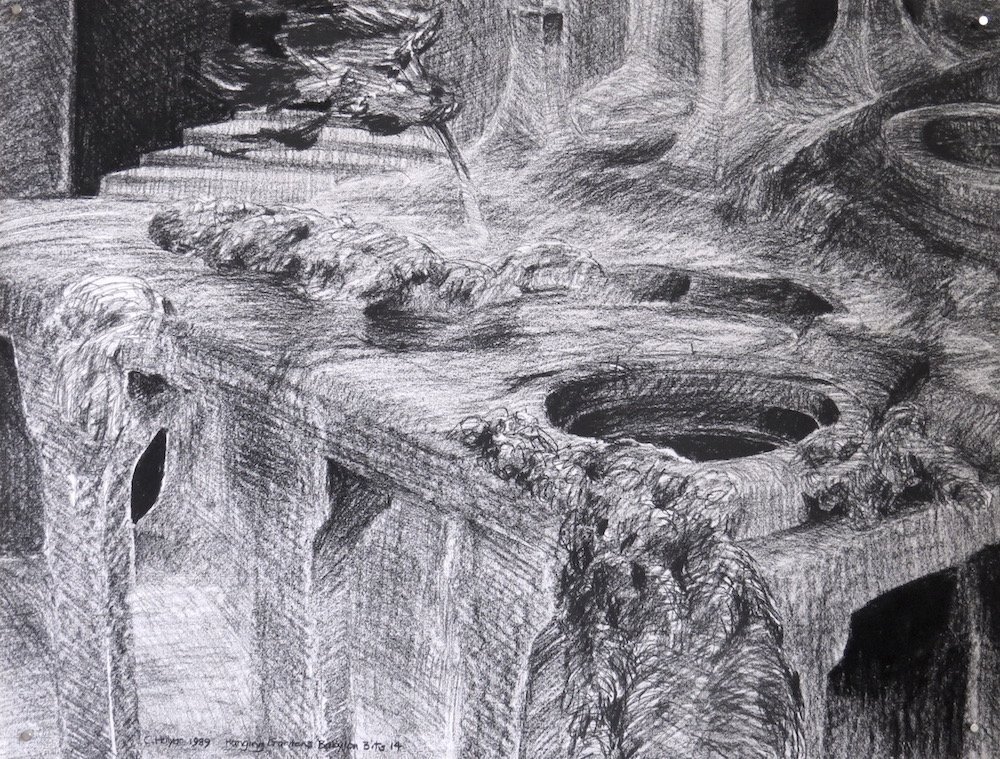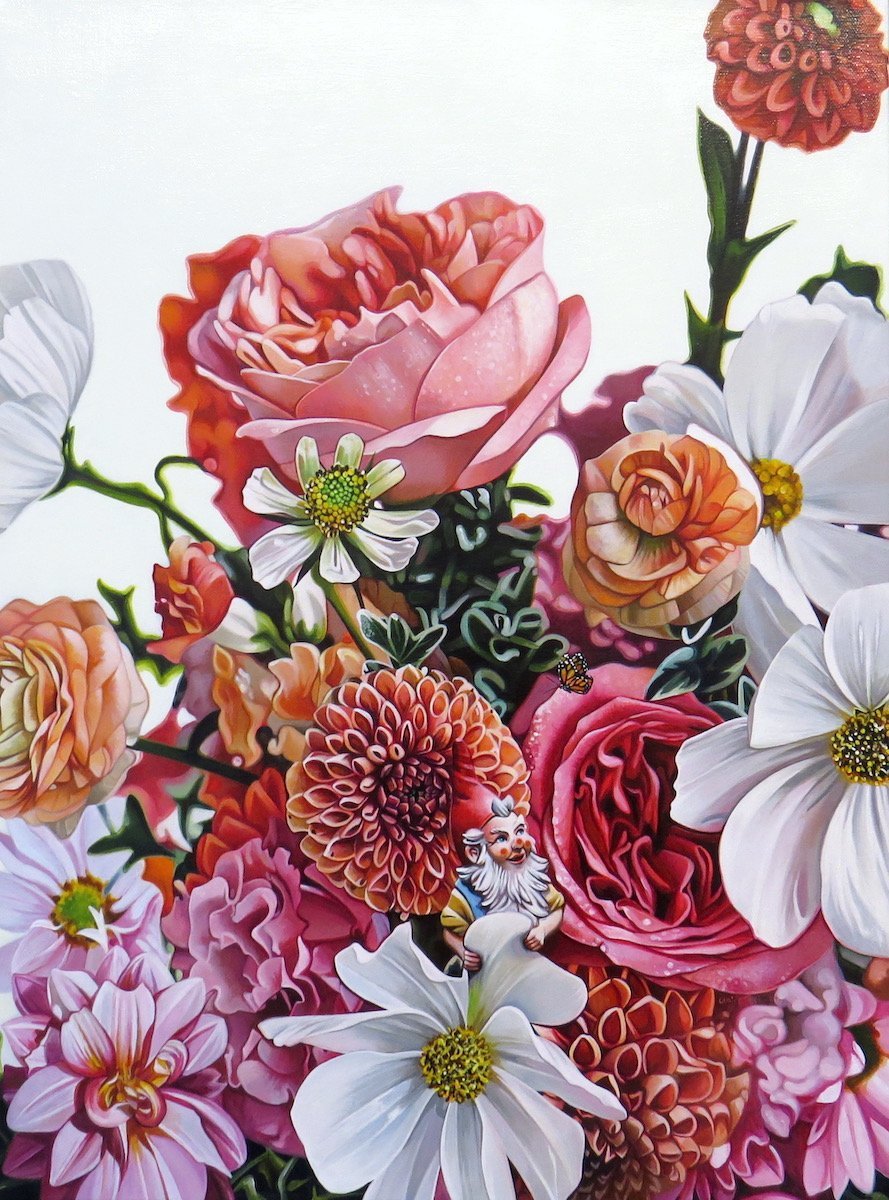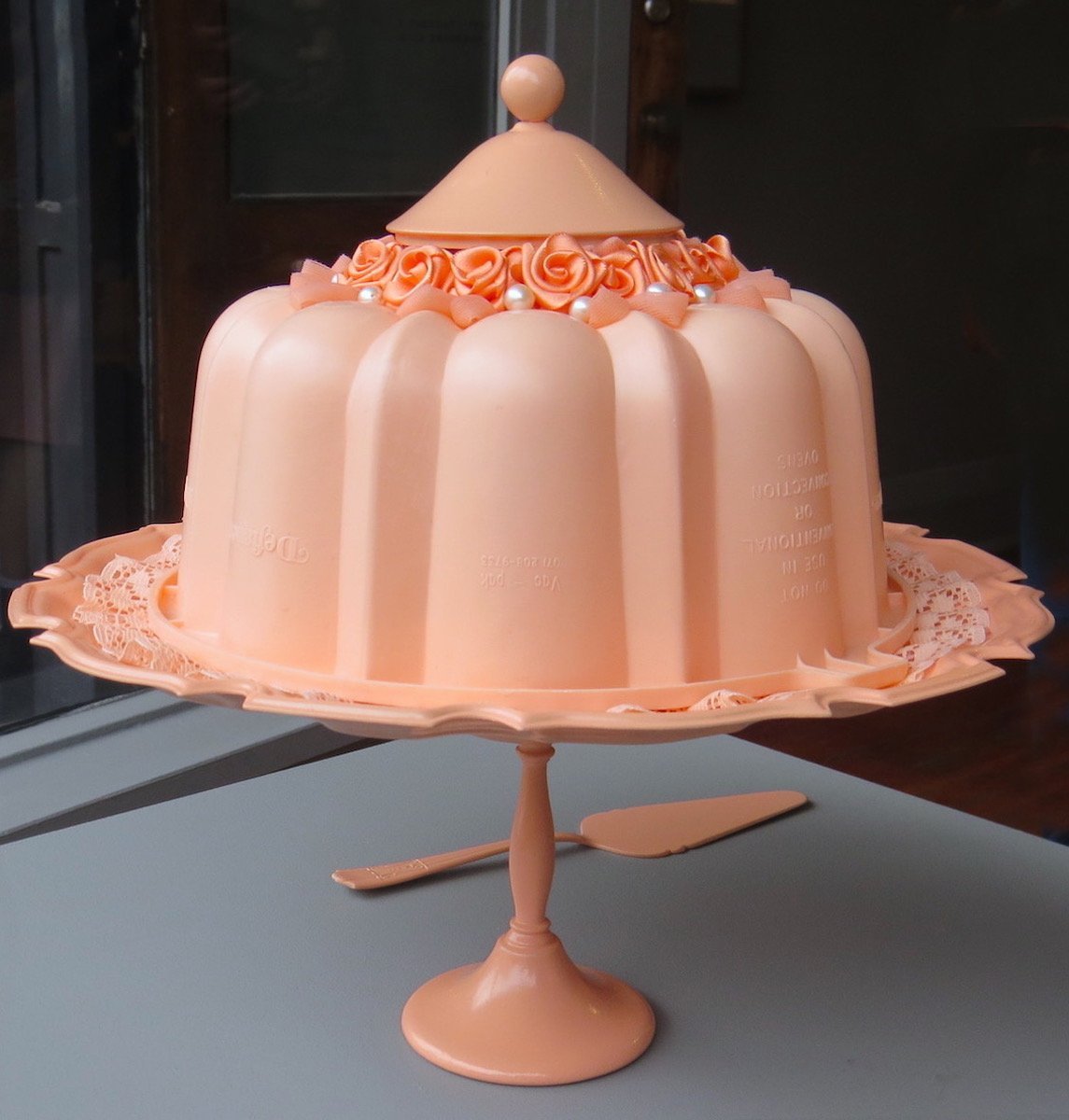
Hanging Gardens and Aprons, Christine Hellyar
(Fe29 Gallery)
Fe29 Gallery is hosting a survey show covering the career of New Zealand artist Christine Hellyar, with works from 1985 to 2024.
Hellyar is perhaps best known for her sculptural work, in which she creates art from bronze castings and various fabrics, such as her "Hopeless Hook" series. Perhaps more notable are her plaited pieces, where the artist weaves and dyes rope-like strands from coconut, jute and other natural fibres, and arranges these in seemingly abstract tableaux. Both of these aspects of Hellyar’s work are well represented in the display.
Another major part of the artists oeuvre is her extended "Apron" series. In these works, canvas apron forms have been constructed and appliqued with latex casts of different raw foodstuffs. Occasionally, the artist has stripped away the canvas to a bare minimum, creating aprons simply from repurposed food bags. Again, these works are well represented, both as photographic prints of her 1985 aprons and in a group of recent sketches for a potential further series.
The biggest revelation of the show is probably the charcoal works inspired by the fabled Hanging Gardens of Babylon. These images, which tie in with Hellyar’s long-held interest in ancient culture, are a most impressive series of pieces, mainly from the late 1990s.

(The Artists Room)
Claire Te Au presents an exhibition of luscious flower blooms at The Artists Room.
Te Au’s works, which stop just short of pure realism, present blooms both close up, filling the frame, and as still lifes in which the backgrounds form a powerful negative space. The artist makes good use of composition, especially in her tondo and oval works.
Colour is also excellently used, notably in the soft mauves and golds of "Forest Friends", and as always with Te Au’s art, there are magic realist touches in the form of impossibly small creatures and her trademark ladybirds hidden in the foliage.
The exhibition features an extra conceit, with many of the works containing deliberate reference to the fairytale of Snow White, often in the form of a small dwarf nestled within the blooms. The centrepiece of the exhibition is a large round work, "Snow White", with the titular character represented as a delicate butterfly on a nicely rendered vessel holding a profusion of white blooms.
Te Au has expanded her previous practice with more background elements, notably in the dramatic sunset of "Doc". These come to the fore in the most photorealistic works on display, especially in the remarkable "The Bees", which forms the central element of a forest-floor triptych alongside two attractive bird portraits.

(Olga)
Artists Emily Hartley-Skudder and Victoria McIntosh bonded over a shared love of second-hand kitsch, especially in the form of old kitchenware.
Rather than simply hoarding the items, or using them for ironic display, both use them as inspirations and in McIntosh’s case materials for their art.
Taking their lead from the seemingly happy yet troublingly strange culinary delights of the late 1970s and early 1980s, the two artists have created an off-centre peach-tinted memory of the domestic tropes of the era. Clever use of second-hand decor is repurposed into surreal trinket boxes and installation sculptures by McIntosh. These are surrounded by well-executed oil paintings of plastic containers and jelly by Hartley-Skudder. Most startling is McIntosh’s plush bedroom chair, repurposed in a way which would gain a nod of approval from early surrealist rebels against female domesticity such as Meret Oppenheim.
The works delightfully skewer an era where womanhood meant staying home to cook and clean, allowing a strong yet playful feminism to come to the fore. This is serendipitously augmented by the brand name of the plastic cake mould which is a major feature of several works. A "Tupperware Defiance" shines through loud and clear in this exhibition.












